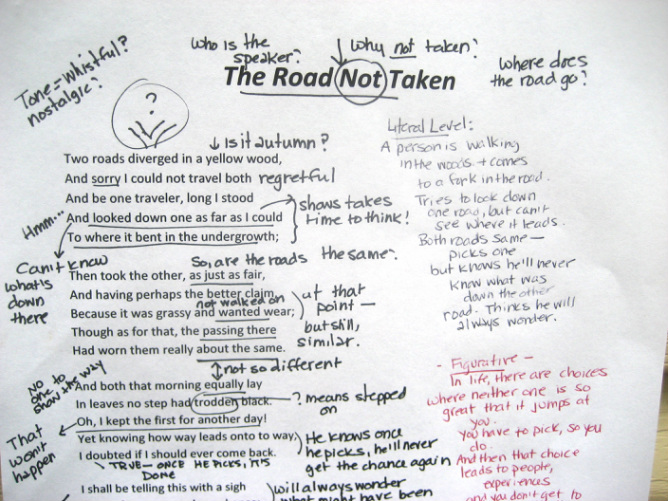

And having taken the grassy road, he keeps the “first one for another day!” However, this future rumination also encompasses a big uncertainty “I doubted if I should ever come back” reflects the poet’s philosophical conjectures about certain certainties in life – the possibility of never having a chance to try out the path, one has discarded. Summary: In the third stanza, the poet seems to present a new idea – the paths lie covered by leaves, none of which has been turned “black” by steps. So he states that “the passing there,” (meaning people who have trampled upon it), have worn it, much like the other one.

Summary: The poet finally resolves to take “the other” path and considering its “grassy” and less worn out look (wanted wear), he contends that it is perhaps “the better claim.” However, his dilemma erupts again as he analyses the other road to appears as untrodden as the one he has taken. Summary: The poem commences with a particular situation – the poet, standing before two divergent roads, “in a yellow wood” (suggesting autumn), seems confused regarding which path to take, and distinctly feels “sorry” for not being able to “travel both.” He, nonetheless performs an expected task ‑ strains his eyes as far as he can, to decipher where the roads finally go “in the undergrowth.” Stanza 2 The theme and analysis of the poem can further help to understand it. The poem records the musings of Thomas, but beneath a simple descriptive narration, it discusses an issue of utmost seriousness – the relevance of choices in life. Edward Thomas loved exploring lanes and forests with Frost and frequently, after returning from such walks expressed his desire of taking an alternative trail. The Road Not Taken, a lyric, was inspired from the ramblings Robert Frost took with his friend, Edward Thomas while staying in Great Britain from 1912 to 1915.


 0 kommentar(er)
0 kommentar(er)
